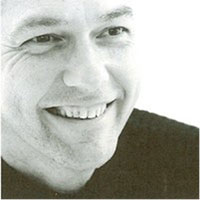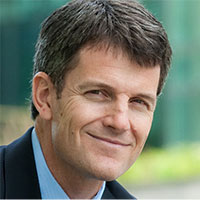- Why Cities need to go on a “vegetarian diet” and how buildings made from “plant-based” materials sequester carbon
- How emerging technologies and new wood/bamboo products have optimized the value chain for buildings/construction.
- How large-scale timber solutions will increasingly supplement concrete and steel
- How UBC “walks-the-talk”, from building the tallest hybrid mass timber building in the world in 2017 (Brock Commons) to the increasing use of wood in construction.
Join us for this session to hear:
Session Hosts:
Jack Saddler, Professor, Department of Wood Science, UBC
Ian de la Roche, Adjunct Professor, Department of Forest Resources Management, UBC
Session Time:
Monday, August 16, 9:00 PST | 12 pm EST | 5 pm UK
Recent Trends in Building with Wood
Population growth, increasing urbanization, geophysical and climate-related disasters are just some of the mega-trends impacting a growing global demand for affordable shelters.
Environmental sustainability, carbon footprint, new technologies and innovations throughout the wood construction value chain are driving a renewed interest in wood, particularly when used in combination with other mainstream building materials.
This presentation will examine these current trends, with particular emphasis on sustainability, emerging technologies, new wood products, new applications and new business models which are all helping to optimize the wood construction value chain. The author will conclude by offering his perspective on the critical role which wood can play in meeting the construction needs of the future.

Ian de la Roche
Adjunct Professor, Forest Resource Management Department
Faculty of Forestry, University of British Columbia, Canada
Ian first joined the forest sector in 1992, when he was appointed President of Forintek Canada Corp. He subsequently assumed the responsibilities for FERIC and Paprican. In September 2006, he took on the challenge of merging the three national institutes into FPInnovations. As its first President, he also had oversight responsibility for the Canadian Wood Fibre Centre. Dr. de la Roche’s career spans almost 40 years of experience in plant genetics research, strategic planning, and creation of partnerships between government and industry. Prior to joining forestry, he served as Assistant Deputy Minister at both Agriculture Canada and Western Economic Diversification. Dr. de la Roche is currently a Principal of DELAROCHE Consultancy, an Adjunct Professor at the University of British Columbia and Business Associate of Timwood Alberta, Canada.
Building with Bamboo
George Bernard Shaw once said, “there are those men who look at the world as it is and ask “why?”, while there are those men who look at the world as it might be and ask, “why not?”
Atelier One’s introduction to Bamboo: After a visit to Bali 10 years ago, I found people “back home” thought building with bamboo was a bit of a joke.
Engineering investigation into Bamboo: However, it is important to understand the very precise structural properties of Bamboo from the Molecular level up as only nature could have made something quite so beautiful.
Assessing the potential of Bamboo including form and connection: Working with Ibuku in Bali to enhance our understanding of Bamboo’s remarkable properties with years of work on geometric shape and stiffness.
Laminated Bamboo: We are at the birth of a novel material (laminated bamboo) that can be used by the construction industry. Although in its infancy, it will compliment wood as a sustainable building material.
Online Bamboo: A plea – let’s form an open source, online resource.
The Arc: A recently completed project applying some of what we have learned.
The builders asked when are we putting the trusses in!!!!!

Neil Thomas
Director, Atelier One
Manchester, England, United Kingdom
Atelier One has been described as ‘the most innovative engineering practice in the UK’. This innovation covers high-level research and implementation for materials in an enormous scale and variety of projects, often providing specialist advice to larger consulting practices. Collaborations with Architects, Artists, and Designers have resulted in many interesting built projects such as Gardens by the Bay (Singapore), London 2012 & Sochi 2014 Olympics Opening Ceremonies, Cloud Gate with Anish Kapoor and ‘The Claw’ Stage for U2’s 360 Degree World Tour, with Mark Fisher.
Sustainable material developments with bamboo
Bamboo is one of the fastest-growing plants on the planet. Used since ancient times as a food, fuel and materials, bamboo is becoming increasingly important as a sustainable solution to a number of pressing global challenges, including poverty, climate change and timber shortage. This presentation will highlight some of the research work by UBC’s newly established Bamboo Application and Management (BAM) Group and its partners. We will discuss bamboo’s unique growth and carbon sequestration attributes, and opportunities and challenges of current engineered bamboo products for building applications. Examples of innovative bamboo-based products for bio-packaging and green infrastructure applications will also be presented.

Chunping Dai
Associate Professor, Department of Wood Science
Faculty of Forestry, University of British Columbia, Canada
Dr. Dai is an Associate Professor at the Wood Science Department, Faculty of Forestry, University of British Columbia. With extensive industry background, Dr. Dai pursues both fundamental and applied research in engineered wood products (EWPs) and bamboo utilization technology (BUT). Current research areas include:
- Modeling and innovative manufacturing of EWPs;
- Development of engineered bamboo products for sustainable infrastructure applications;
- Natural fiber composites for bio-packaging;
- Improvement of veneer and strand-based composites manufacturing; and
- Enhanced properties of wood and bamboo products.
Growing the Future
Cities need to go on a vegetarian diet — we can build most of the buildings we need from plant-based materials. Timber skyscrapers are possible, and large-scale housing, schools, hospitals and other mid-rise buildings have a large role to play in carbon storage in long-lived real assets.
Forest conservation and timber construction can be symbiotic. The buildings are beautiful, energy efficient, and resilient. We need policies to ensure widespread adoption around the work.

Michael Ramage
University Reader in Architecture and Engineering
Deputy Head of Department for Research
University of Cambridge, United Kingdom
Michael Ramage leads the Centre for Natural Material Innovation at Cambridge University. Trained as an architect and an engineer, he is a Reader in Architecture and Engineering in the Department of Architecture, a fellow of Sidney Sussex College, and a founding partner of Light Earth Designs. He studied architecture at MIT, and worked for Conzett Bronzini in Switzerland prior to teaching at Cambridge. His current research is focused on developing low-energy structural materials and systems in masonry, better housing in the developing world and improved engineered timber and bamboo through natural material innovation. He teaches, researches and designs buildings, and receives research funding from the Leverhulme Trust, the Engineering and Physical Sciences Research Council, the Royal Society, the British Academy, and industry.
Beyond the Case for Tall Wood
Ten years after we made “The Case for Tall Wood”, it is clear that the concept has taken deep roots. We no longer argue whether Tall (and Big) Wood is possible or even a good idea.
The challenge before us now is to identify the best most repeatable large-scale timber solutions, in the same way that the steel and concrete industry settled on their own go to solutions over time.
As lessons learned continue to accumulate from a fast-growing pool of market driven projects, those go to timber solutions are bound to come into focus. This presentation will take stock of the state of affairs today.

J. Eric Karsh
Principal
EQUILIBRIUM Consulting Inc., Canada
A Fellow of the Institute of Structural Engineers (UK), Eric is a founding partner of Equilibrium Consulting, a Vancouver structural engineering firm recognized internationally for its leadership in the field of timber and seismic engineering. Eric is also part owner of BC Passive House in Pemberton, BC, a pre-fabrication company specializing in quality, high energy performance panelized building systems.
Since founding Equilibrium in 1998, Eric has been influential in transforming the timber industry in North America and abroad through the execution of numerous innovative and trend setting designs. These include the Wood Innovation Design Centre and recently the OSU School of Forestry in Corvallis, OR. Eric is currently working on Google’s first mass timber office building in Sunnyvale, CA, as well as a 9-storey mass timber schoolboard office building in Paris, France.
Central to Eric’s work is a commitment to sustainable construction, and an acknowledgement that as designers and builders, we have an urgent responsibility to help make our built environment a gentler one for our planet.
The Evolution of Mass Timber Construction at the University of British Columbia
This presentation provides an overview of mass timber building construction at the University of British Columbia (UBC) over the past decade.
UBC has been at the forefront of the revitalization of wood construction with the innovative use of mass timber products in academic, student life and operational buildings. A total of nine building projects at UBC have utilized engineered wood products in significant structural applications during this period, with another building currently under design. A wide range of products have been deployed including glue-laminated timber (glulam), cross laminated timber (CLT), parallel strand lumber (PSL), laminated strand lumber (LSL), and nail laminated timber (NLT).
Lessons learned on initial projects with respect to design, construction methodology and cost informed the development of subsequent projects. This evolution culminated with the Brock Commons Tallwood House, an 18-storey (54 metre) student residence which at the time of completion in 2017 was the tallest hybrid mass timber building in the world. The presentation will review the benefits, challenges, and key lessons from these mass timber projects.

John Metras
P.Eng., MBA
Associate Vice-President, Facilities
University of British Columbia, Canada
John leads the strategic direction of facilities on the UBC Vancouver campus. He has over 20 years of experience in facilities development and operations including his previous roles as Managing Director, Infrastructure Development and Director of UBC Plant Operations (now Building Operations).
John has played an integral role in helping UBC evolve into a global leader in sustainability. He has worked on a wide range of initiatives including the Campus as a Living Lab program, the 20-Year Sustainability Strategy, LEED Platinum and LEED Gold certified building projects, and the development of the Brock Commons Tall Wood student residence. John has a Bachelor of Engineering Science from the University of Western Ontario, a Master of Business Administration from the University of British Columbia, and is a registered Professional Engineer.

